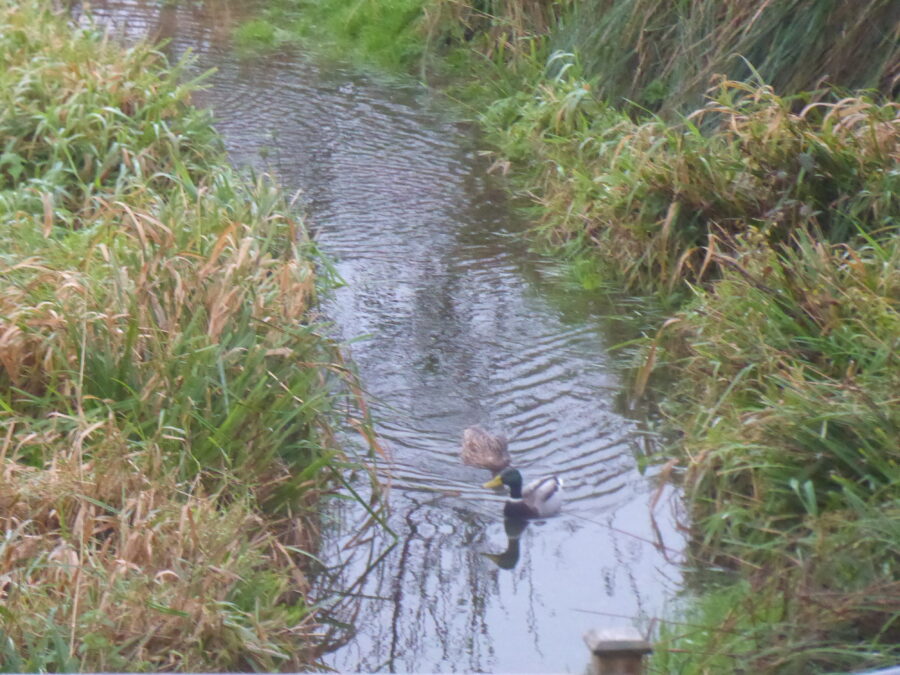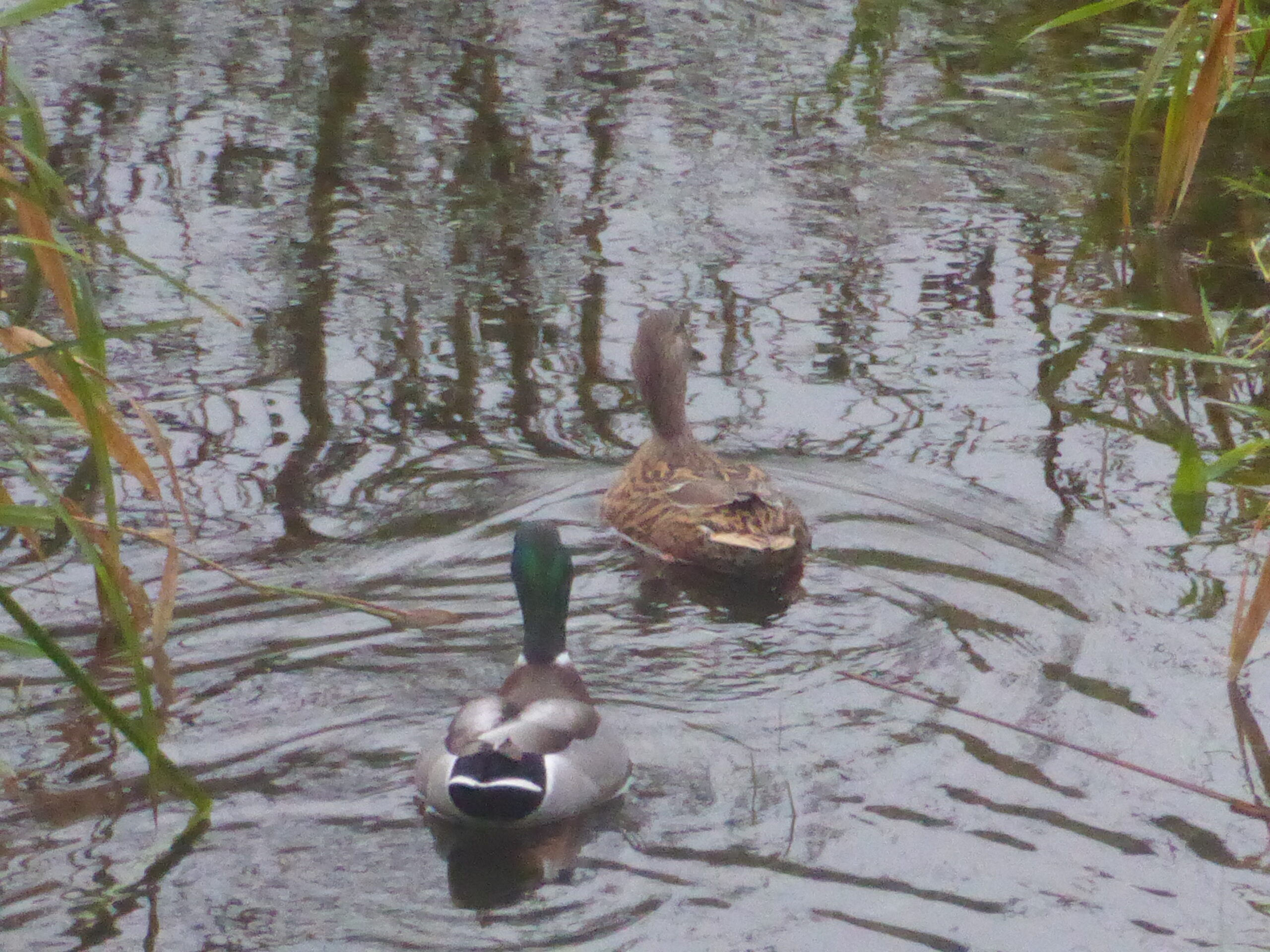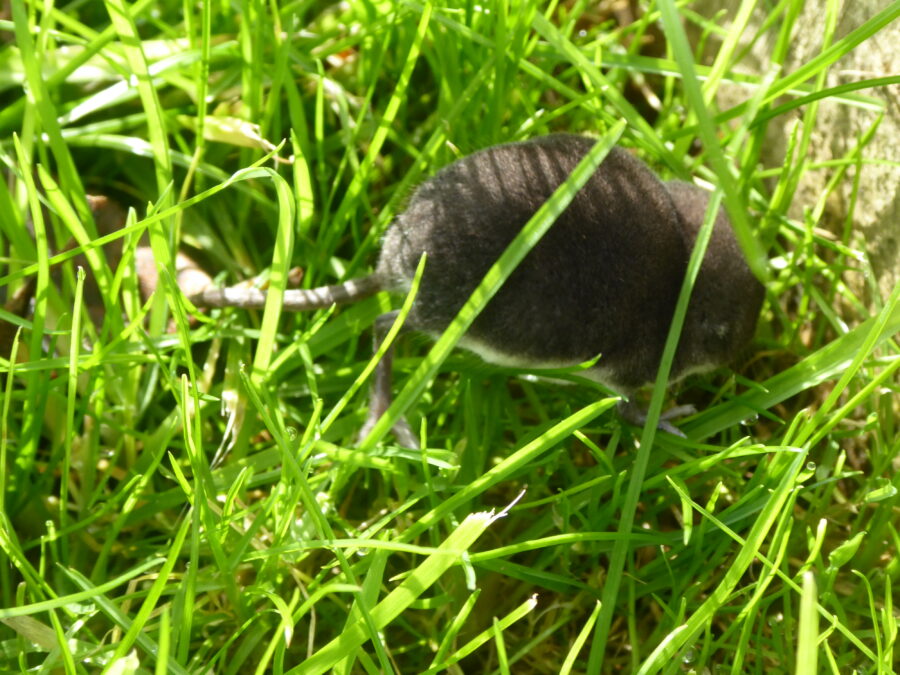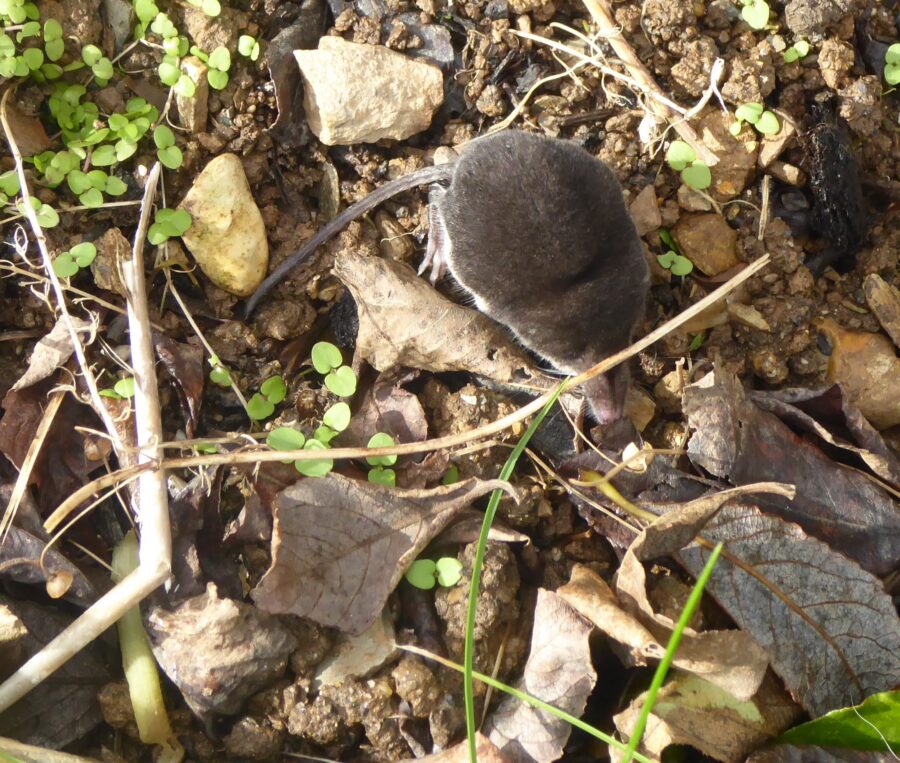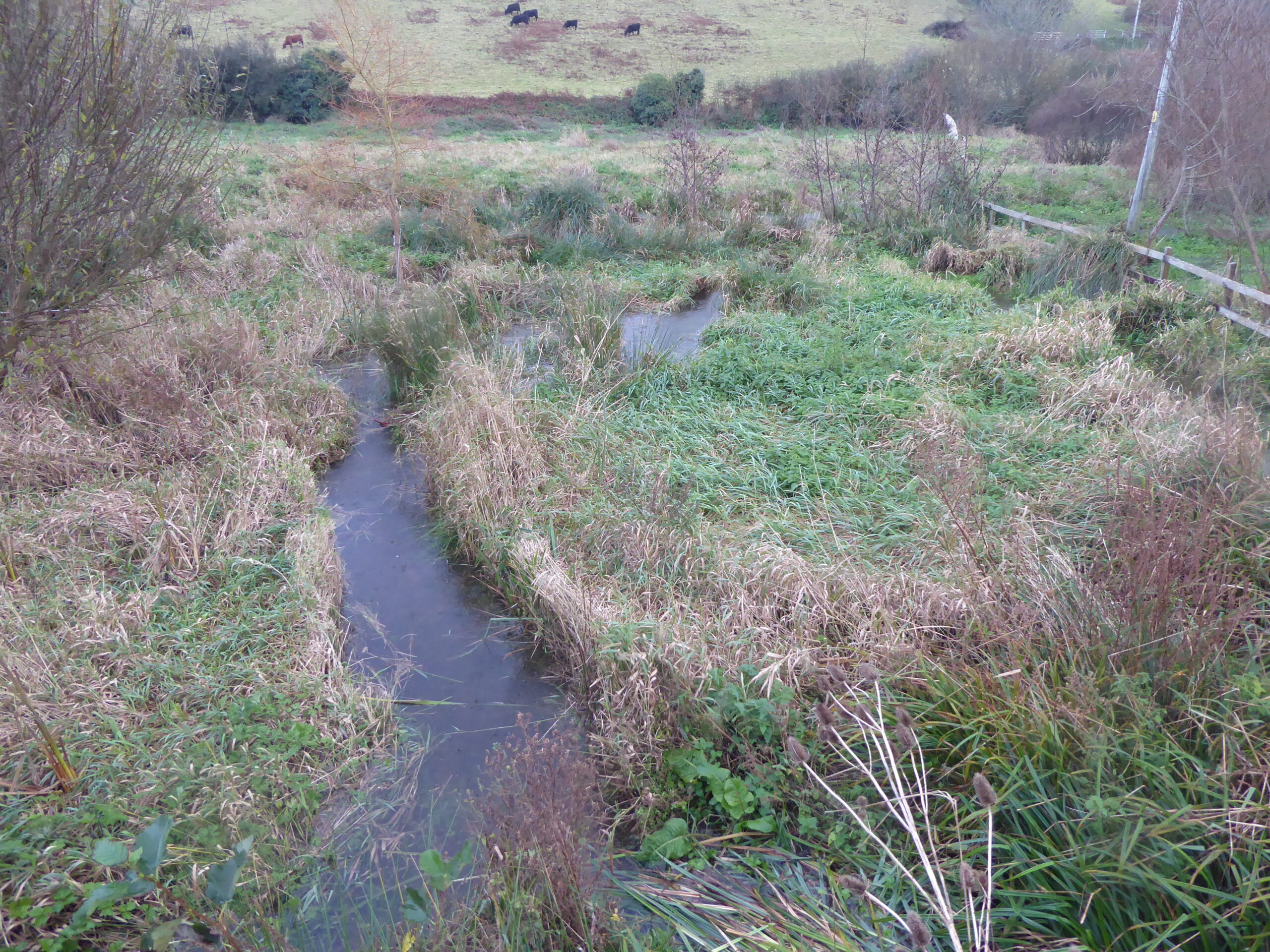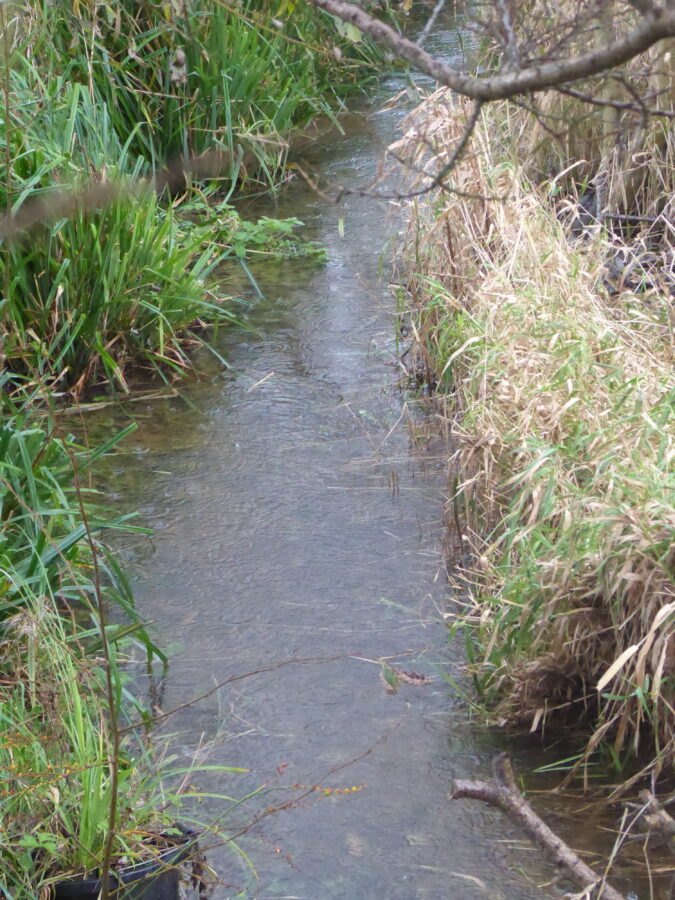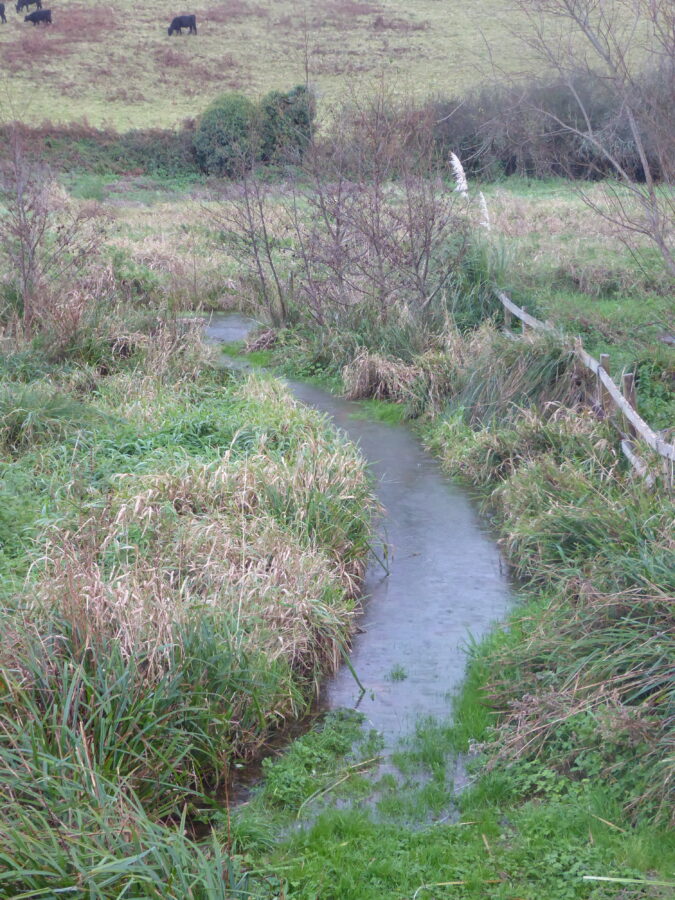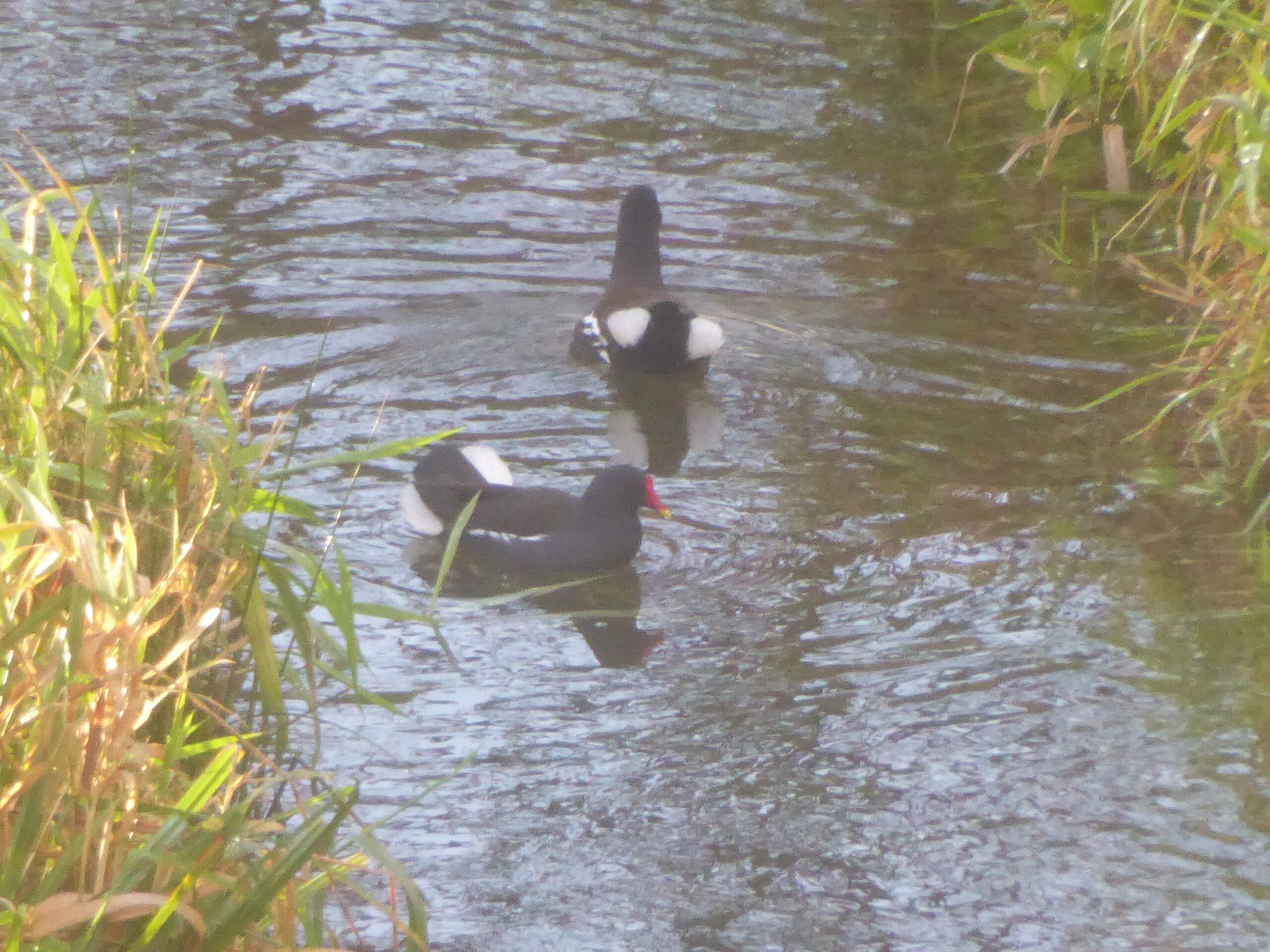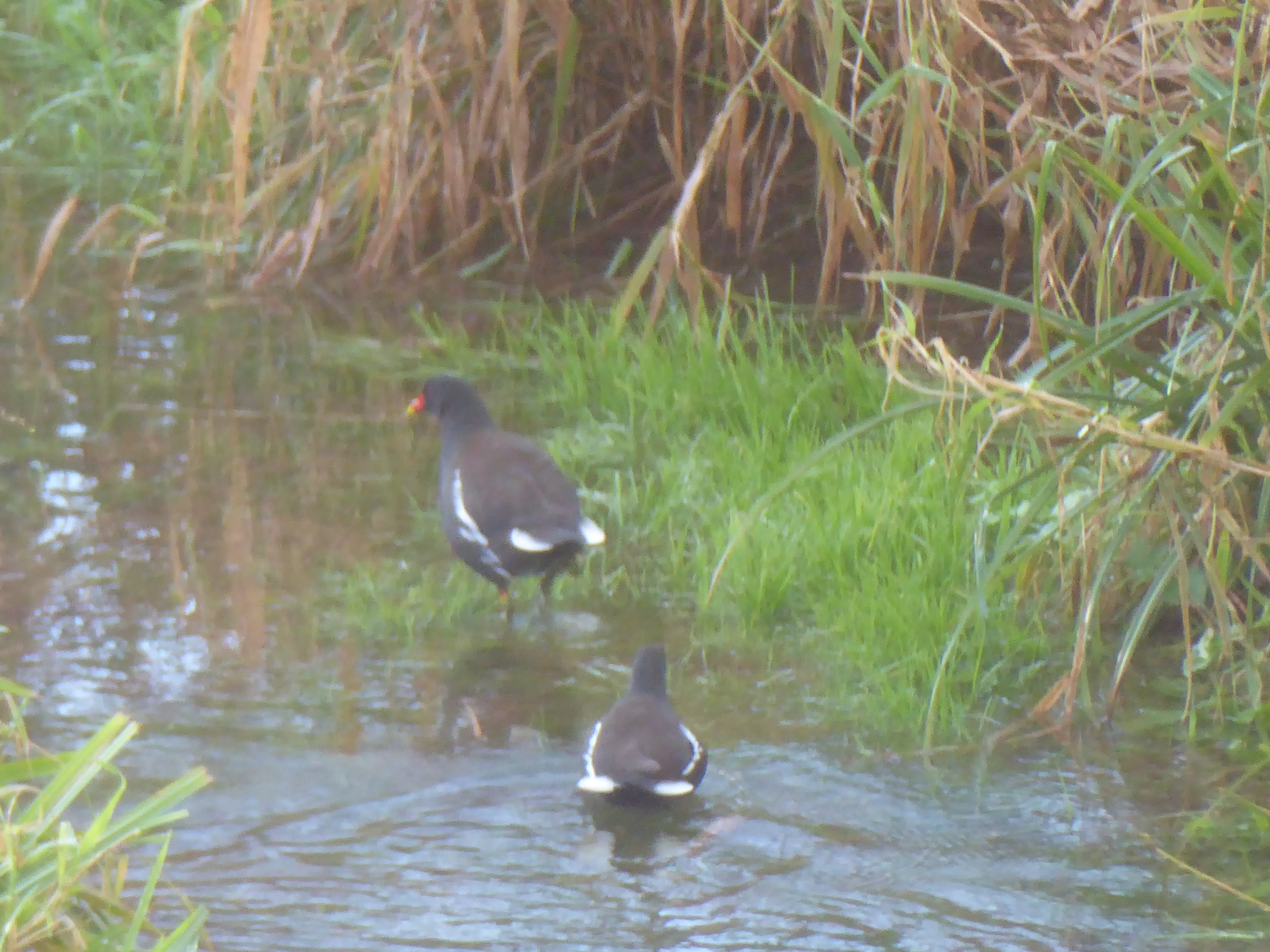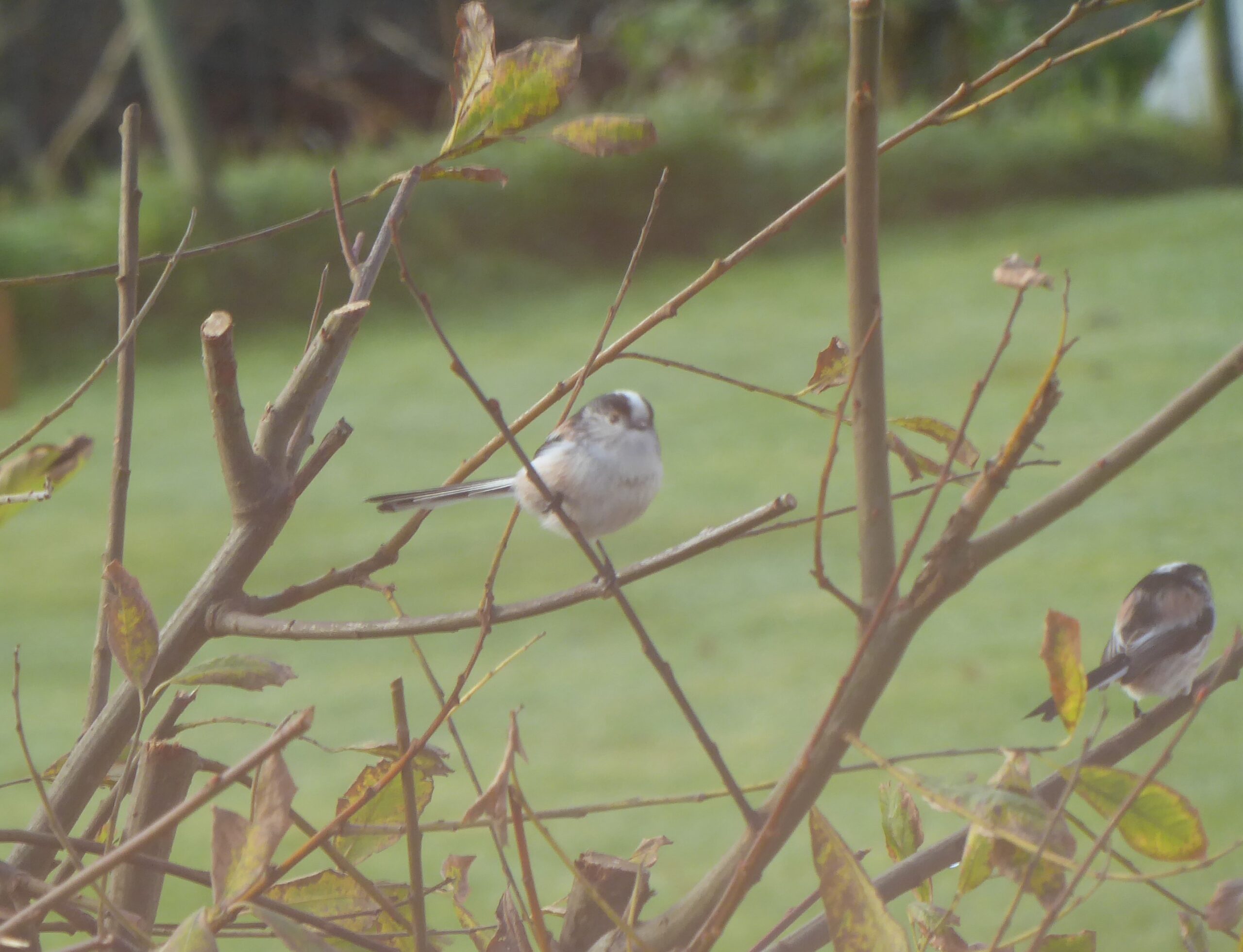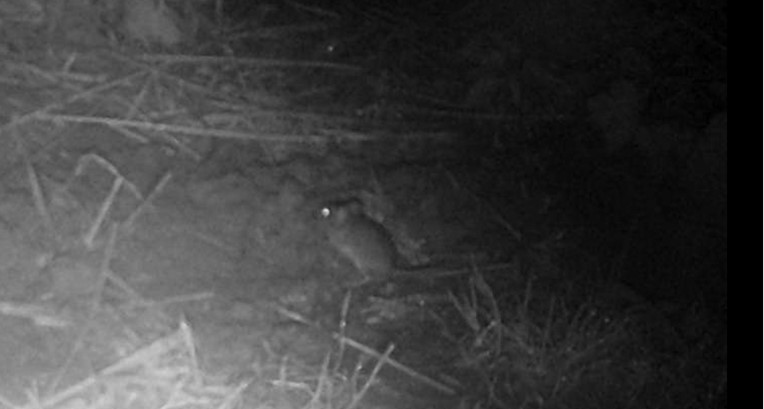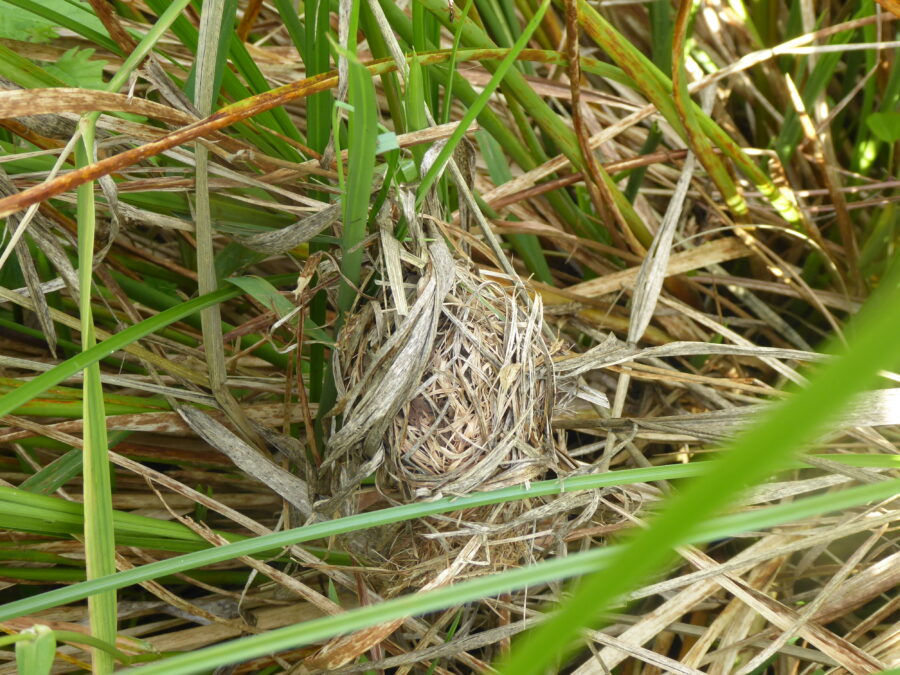Well, I didn’t have to wait long for the mallards! It was at breakfast on Wednesday. I thought I knew which post I was going to write next, but the mallards had other ideas.
They usually hang out on next door’s pond, or I see them flying up the valley, but on Wednesday morning they were whooshing down the stream, and they made a left turn up our ‘path’.
I didn’t write much about the moorhens, and I was thinking, what can I write about mallards? They seem to be on every pond. So, I googled mallard and found out that it is a ‘dabbling duck’. What? Is that even a Thing?
Apparently, dabbling ducks are very much a ‘thing’. The term is used to describe the ducks that don’t dive. Dabbling ducks include – mallards, pintails, gadwalls, teals, and widgeons. They are particularly at home in shallow water, marshes, and flooded fields. They feed off aquatic plants, seeds, and roots, from the bottom or surface of shallow waters, so they dabble at the surface or tilt and go tail-up to get to the juicy plant bits on the bottom.
Another difference in behaviour is the way they take flight. Dabblers spring straight up into the air, and divers have to run across the surface of the water to gain momentum. Dabblers swim with their tails held clear of the water, and their feet are smaller and less powerful than the diving ducks, as they don’t use them for propulsion in diving or flying.
Finally, dabbling ducks are also known as ‘puddle ducks’, so now we know a bit more about Jemima, don’t we!
